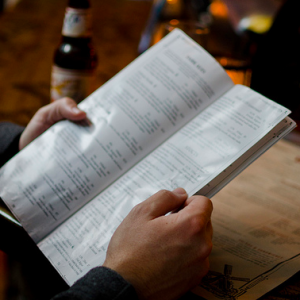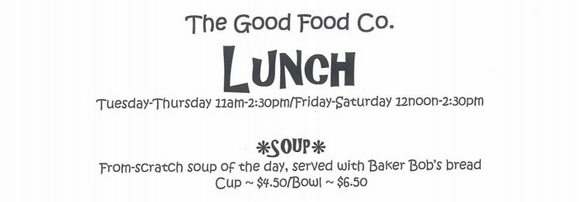3 Restaurant Menu Pricing Tips to Increase Sales
 Pricing can be an issue for any business and that’s why restaurant owners and managers seek out menu pricing tips. When it comes to setting a price for your menu it’s important to get it right because too far to either end of the issue can leave your business hurting.
Pricing can be an issue for any business and that’s why restaurant owners and managers seek out menu pricing tips. When it comes to setting a price for your menu it’s important to get it right because too far to either end of the issue can leave your business hurting.
Food prices have been rising and it’s been putting pressure on restaurants. When the economy is struggling customers want lower prices and suppliers want higher prices. It’s not a good mix for the restaurant, but in order to stay in business the restaurant needs to do what it can to make the most profit while increasing sales.
Here are 3 menu pricing tips for your printed menu and your website menu to help you increase sales at your restaurant.
Menu Pricing Tips for Restaurants
If you have any additional tips be sure to share them in the comments.
1. Place the Price at the End of the Description
This is one of the old menu pricing tips used in upper scale restaurants, but it can be used by any restaurant or any business really. I’ve looked around in an attempt to find out where I heard about this pricing tip, but I can’t find the source so if you’re familiar please share the source.
Anyway, when you’re pricing an item on your menu make sure the title of the dish and the description are first. Place the price near the end of the description.
You do not want to hide the price because some people will scan the page for prices right away. What you’re doing is simply looking to sell people on the items on the menu before price becomes a factor. Someone might see a price of $25 and make a decision right away not to order, but if they read a tantalizing description then $25 might seem very reasonable.
Here’s an example:
Parmeson Crusted Tilapia
Fill your senses. The fish is flaky with a crispy parmeson and bread crumb crust. You’ll see steam rising off the plate and you’ll hear the cracking of the oils. Add a dash of home made tartar sauce and you’ll never look back. $20.
I won’t claim that to be the greatest description of all time, but the description is not bad and by the time you’re done reading you’re ready for some fish and the price seems reasonable. Someone might open the restaurant looking for all the dishes that are $15 or less, but by the time they read the title and the description they’ll understand the value for $20.
2. Take Advantage of the Bundle Method
Menu Pricing Tip: Use the Bundle Method to increase sales. Tweet This
The bundle method is advantageous for both the customer and for you. Basically you take complementary items and you combine them to create a bundle of items that together sell for a lesser price than they would individually. You get more sales per customer and your customer is able to get a slight discount even though they’re actually spending more money overall.
Say a sports bar is hosting people for the big game this Sunday. Two big items on the menu are burgers and chili fries. These two items are ordered often, but usually not in together. Now, some people probably don’t want both, but others might simply not realize they can order both at the same time. When the option is not presented it’s not always obvious.
On the menu the sports bar can add a callout stating: “Burger: $9. Chili Fries: $6. Burger & Chili Fries: $12.”
That’s a pretty good deal.
Let’s say the sports bar is using the rule of thirds (see below) for these prices. The burger is $9 and food costs are $3 so there’s a basic profit of $6. The fries are $6 and the food costs are $2 so the basic profit is $4. The restaurant can either take those profits or they can combine things, which would have the burger and fries at $12 and the basic profit at $7.
You’re adding sales and profit because your customers are buying more items.
This is a basic example. Make sure you don’t cut prices too much. Hey, if it happens to be at the end of the night and you’re running high on something it’s okay to have your staff start to bundle things. You can either throw food out (no sales) or you can bundle.
3. Use Price Anchoring
This is an interesting one. Derek Halpern at Social Triggers covered it recently. Mint.com covered price anchoring also as they discussed it with iPads. Derek used it for businesses that sell services, but it can apply to restaurants too.
In the various sections of your menu (appetizers, dinners, desserts, drinks, etc.) include at least one high priced item to set the price anchor. Say you have a basic plain burger on your menu for $5. Now, say you also have five different types of burgers with a different topping like mushrooms or onions for $8. Some people might balk at the idea of paying $3 for a topping so they’ll just get the plain burger.
Now, add an option for all the toppings for $15. There will be a few customers that order it, but just having it on the menu will make the $8 option seem pretty good. And in the end you’re really not adding any extra inventory to your stock. You already have those mushrooms, onions and other ingredients.
That’s how you can use price anchoring to your advantage.
Bonus Tip: Follow the Rule of Thirds
A few weeks or even months back I was watching Restaurant: Impossible on The Food Network with Robert Irvine. I know the show is not the best representation of the restaurant industry in ways, but there was a point made about pricing I found interesting and universal for many businesses.
The tip from the host, Robert Irvine, was to triple the cost of the food to create the menu price. So you figure out the cost of the food and by tripling that number you’ll account for your other costs including profit.
Here is the basic formula.
Food Cost + Labor + Business Expenses including Profit = Menu Price
This formula is not exact. If you can get your margins higher you should. Customer demand comes into play as well, but this is a good basic rule when setting prices.
Businesses in a variety of industries use this formula as well. You can triple it or double it. Most businesses at least try to double or triple their money on anything they sell so it’s a good basic step for a restaurant as well.
Conclusion
Hopefully these menu pricing tips will help you increase sales for your restaurant. You should be able to take action with these and at least give them a try. Not every tip might work for your particular restaurant, but a couple might so give them a try.
And if you have any additional tips you have that would help your fellow restaurant managers please share them in the comments.
If you have questions about pricing or about how you can add pricing to your website please leave a comment below or tweet to us.
Image: jfiess



It’s so good to know that the bundle method of pricing is beneficial to both the customer and the business. My spouse is thinking about opening up a restaurant this year and she needs advice. It would be great if she could get some training in order to have a much better business.
I have read your blog it’s really good
I agree with you that a restaurant can sell more food if they bundle complementary items together. I can’t think of a single restaurant that sells a burger without French fries. That is a classic combo that people an but separately but when they see the combo, I bet they’ll almost always go for it.
what episode was the 3rd rule in?